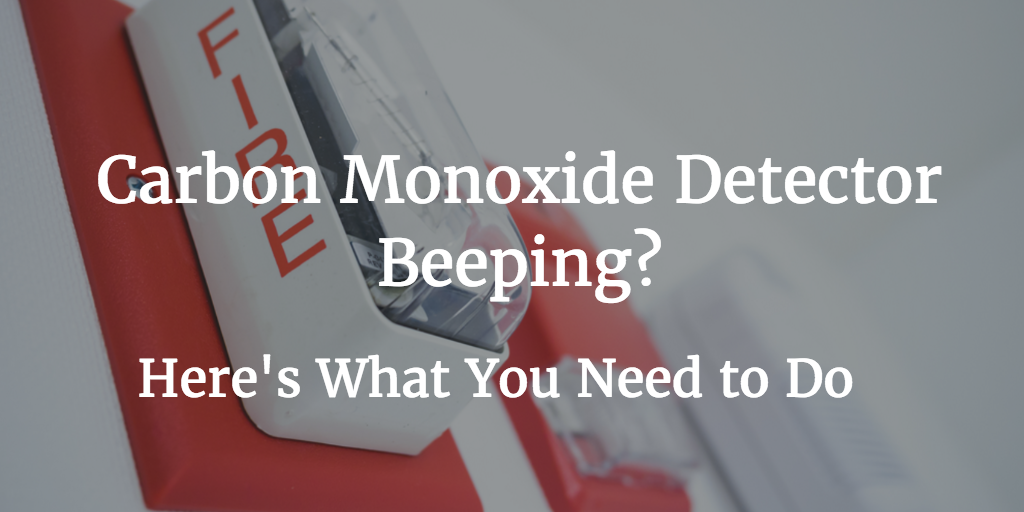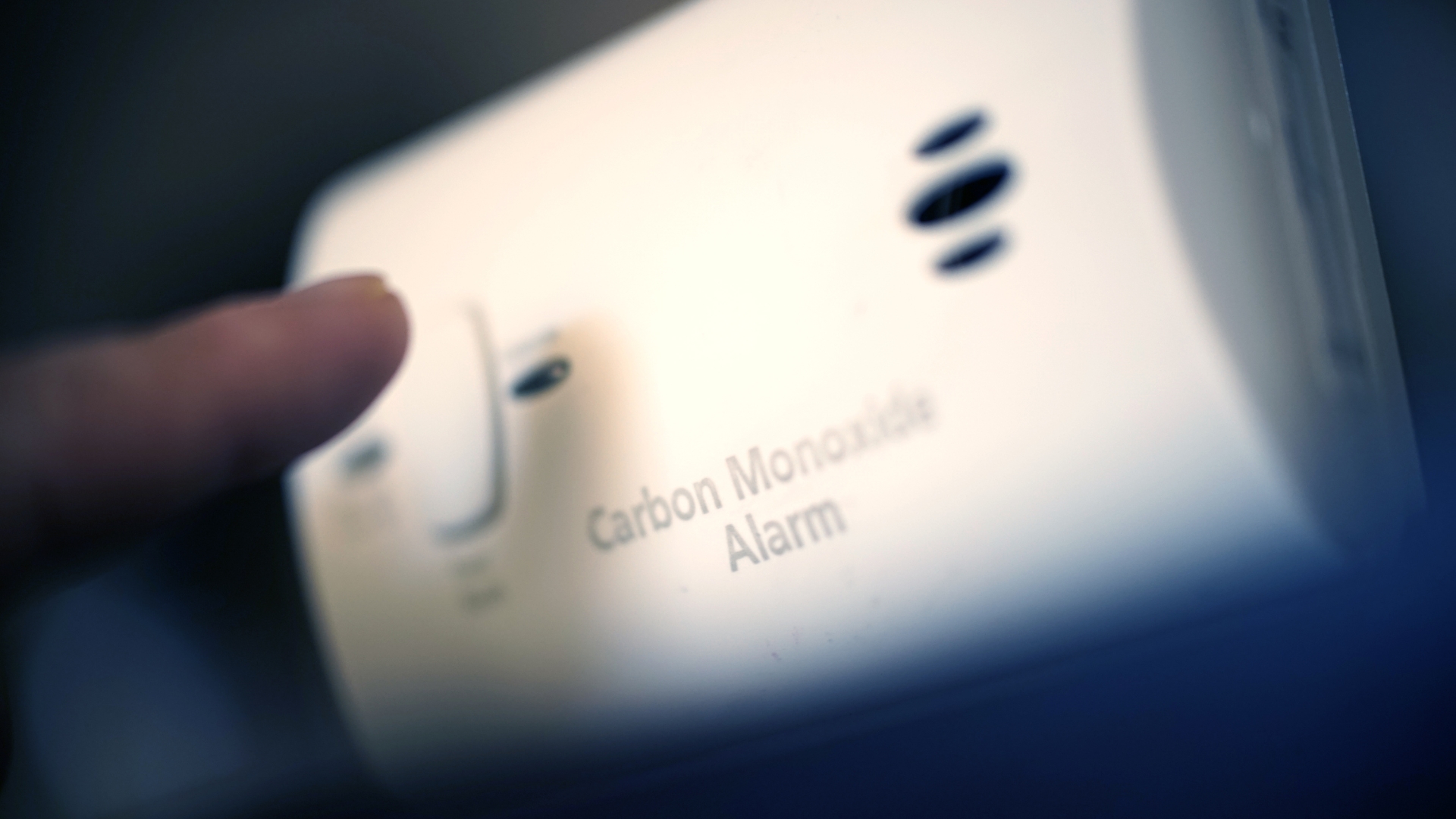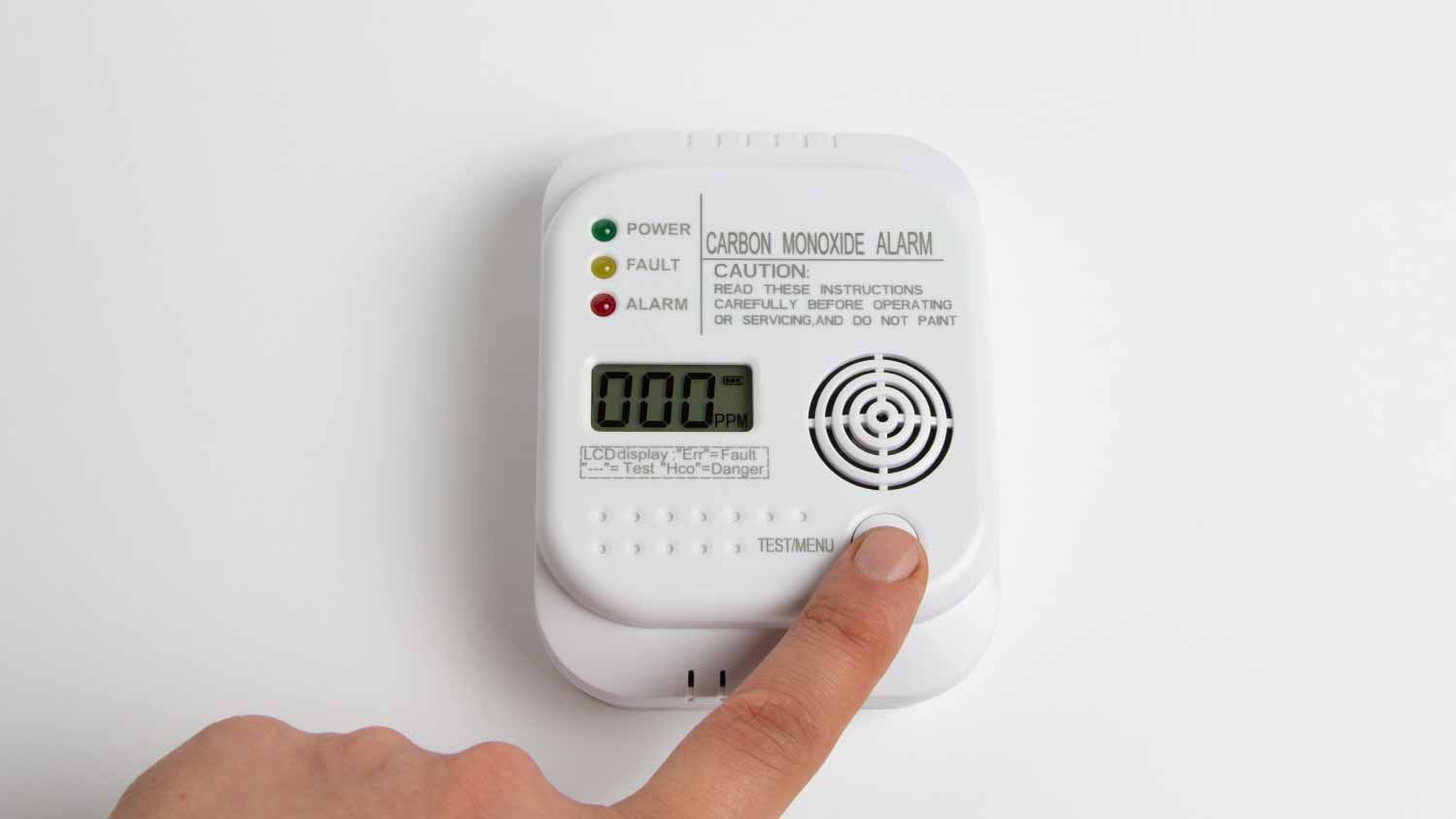Why Is The Carbon Monoxide Alarm Beeping

A beeping carbon monoxide (CO) alarm can be alarming, and for good reason. It signifies a potential danger that requires immediate attention. This guide will walk you through the various reasons why your CO alarm might be beeping, helping you understand the situation and take appropriate action to protect yourself and your family.
Understanding Carbon Monoxide and Your Alarm
Carbon monoxide is a colorless, odorless, and tasteless gas produced by the incomplete burning of fuels such as natural gas, propane, gasoline, kerosene, oil, charcoal, and wood. Because you can't detect it with your senses, a CO alarm is crucial for detecting dangerous levels in your home. Think of it as your silent guardian, constantly monitoring the air for this deadly gas.
A CO alarm works by sensing the concentration of carbon monoxide in the air. When the CO level exceeds a certain threshold, the alarm sounds, alerting you to the potential danger. There are several different types of CO alarms, each with its own way of detecting CO, but they all serve the same purpose: to save lives.
Types of Alarms and Their Signals
It's important to distinguish between different types of beeping and what they mean. A CO alarm doesn't just have one beep for every situation.
- Rapid, continuous beeping: This usually indicates a high level of carbon monoxide is detected. This is an emergency situation!
- Chirping (single, intermittent beep): This often signifies a low battery or the end-of-life of the alarm.
- Specific beep patterns (check the manual): Some alarms have specific beep patterns to indicate other issues, such as a malfunction. Always refer to your alarm's manual to understand its specific signaling system.
Reasons Why Your CO Alarm Might Be Beeping
Now, let's delve into the common reasons why your CO alarm might be sounding:
1. High Levels of Carbon Monoxide
This is the most serious reason for a CO alarm to beeping. When the alarm detects a dangerous level of carbon monoxide, it will sound a loud, continuous alarm. If you hear this alarm, evacuate the premises immediately. Do not try to find the source of the leak yourself. Once you are safely outside, call emergency services or the fire department.
Potential sources of high CO levels include:
- Malfunctioning appliances: Furnaces, water heaters, stoves, ovens, fireplaces, and other fuel-burning appliances can produce carbon monoxide if they are not properly maintained or vented.
- Blocked chimneys or flues: Obstructions in chimneys or flues can prevent carbon monoxide from escaping your home.
- Running vehicles in an attached garage: Even briefly running a car, generator, or other gasoline-powered engine in an attached garage can quickly fill your home with carbon monoxide.
- Portable generators: Using a portable generator indoors or too close to a window or door can be extremely dangerous.
- Charcoal grills: Burning charcoal indoors is a major source of carbon monoxide.
2. Low Battery
A common reason for a CO alarm to chirp intermittently (usually once a minute) is a low battery. Many CO alarms use batteries as a backup power source in case of a power outage. When the battery gets low, the alarm will chirp to let you know it needs to be replaced. Replace the battery immediately with a fresh one of the correct type.
Even if your CO alarm is hardwired, it likely has a battery backup. Check the battery regularly and replace it at least once a year, or more often if the alarm indicates it's needed.
3. End of Life
CO alarms have a limited lifespan, typically 5-10 years. After this time, the sensor that detects carbon monoxide can become less reliable. When the alarm reaches the end of its life, it will usually emit a specific chirp or beep pattern to indicate that it needs to be replaced. Replace the entire alarm immediately. Do not just replace the battery.
Most CO alarms have an expiration date printed on them. Check the date regularly and replace the alarm before it expires.
4. Malfunction
Sometimes, a CO alarm can malfunction and start beeping even if there is no carbon monoxide present. This can be due to a variety of factors, such as electrical interference, dust, or humidity. If you suspect that your alarm is malfunctioning, consult the user manual for troubleshooting steps. If the problem persists, replace the alarm.
5. Dust and Debris
Dust and debris can accumulate inside the CO alarm, interfering with the sensor and causing it to malfunction. Clean the alarm regularly with a soft brush or vacuum cleaner to remove any dust or debris. Be careful not to damage the sensor.
6. Humidity and Temperature
Extreme humidity or temperature can also affect the performance of a CO alarm. Avoid placing alarms in areas with high humidity, such as bathrooms or laundry rooms. Also, avoid placing alarms in direct sunlight or near heat sources.
7. Temporary CO Spikes
In some cases, a CO alarm may beep due to a temporary spike in carbon monoxide levels. This can happen when starting a car in an attached garage, using a fireplace, or operating certain appliances. If the alarm stops beeping after a short time and you are confident that there is no ongoing source of carbon monoxide, you may not need to take further action. However, it's always a good idea to investigate the cause of the spike and ensure that your appliances are functioning properly.
What to Do When Your CO Alarm Beeps
The appropriate course of action depends on the type of beep you're hearing and the situation:
If the Alarm is Beeping Continuously (Emergency):
- Evacuate Immediately: Get everyone out of the house and into fresh air.
- Call for Help: From a safe location, call 911 or your local fire department.
- Do Not Re-enter: Do not go back inside until emergency responders have cleared the home.
- Professional Inspection: Have your home inspected by a qualified technician to identify and repair the source of the CO leak.
If the Alarm is Chirping Intermittently (Non-Emergency):
- Check the Battery: Replace the battery with a fresh one.
- Clean the Alarm: Remove any dust or debris.
- Check the Expiration Date: If the alarm is nearing or past its expiration date, replace it.
- Consult the Manual: Refer to the user manual for troubleshooting steps.
- Replace the Alarm: If the problem persists, replace the alarm.
Preventing Carbon Monoxide Poisoning
Prevention is always better than cure. Here are some tips to help prevent carbon monoxide poisoning:
- Install CO alarms: Install CO alarms on every level of your home, especially near sleeping areas.
- Test CO alarms regularly: Test your CO alarms at least once a month to ensure they are working properly.
- Replace batteries regularly: Replace the batteries in your CO alarms at least once a year, or more often if needed.
- Have appliances inspected: Have your fuel-burning appliances inspected and maintained by a qualified technician at least once a year.
- Ensure proper ventilation: Make sure that chimneys and flues are clear of obstructions and that appliances are properly vented.
- Never run vehicles in an attached garage: Never run a car, generator, or other gasoline-powered engine in an attached garage, even with the door open.
- Never use charcoal grills indoors: Never use charcoal grills indoors, even in a fireplace.
- Be aware of the symptoms of CO poisoning: The symptoms of CO poisoning can include headache, dizziness, nausea, vomiting, weakness, and confusion. If you experience any of these symptoms, get to fresh air immediately and seek medical attention.
Choosing the Right Carbon Monoxide Alarm
When selecting a CO alarm, consider the following factors:
- Type of Sensor: Electrochemical sensors are generally considered to be the most reliable.
- Power Source: Choose between battery-powered, hardwired, or combination models. Hardwired models with battery backups offer the best protection.
- Digital Display: Some alarms have a digital display that shows the current CO level in the air. This can be helpful for monitoring CO levels and identifying potential problems.
- End-of-Life Signal: Make sure the alarm has a clear end-of-life signal.
- Certification: Look for alarms that are certified by a recognized testing laboratory, such as UL (Underwriters Laboratories).
Conclusion
A beeping carbon monoxide alarm should never be ignored. Understanding the different types of beeps and their meanings, as well as the potential causes of CO leaks, can help you take appropriate action to protect yourself and your family. By following the tips in this guide, you can ensure that your CO alarm is working properly and that your home is safe from the dangers of carbon monoxide poisoning. Remember to always prioritize safety and call for professional help if you suspect a CO leak.










